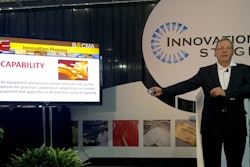I wrote in October about new federal legislation that places an increased emphasis on apprenticeships. In December I described a new model for a registered apprenticeship in industrial maintenance and mechatronics that was put forward by PMMI The Association for Processing and Packaging Technologies and approved by the US Department of Labor. These two topics are now converging, catalyzed by the allure of 20 to 40 potential grants ranging in size from $2.5 to $5.0 million each to encourage apprenticeship. Each million dollars in spending is intended to create about 200 new apprentices over a five year period. Workforce agencies, schools and other non-profits are scurrying to develop and submit competitive proposals before the end of April.
The funding source for these grants comes from H-1b visas - those visas granted to allow highly skilled foreign workers to come to America to fill jobs that employers can't otherwise fill. The intent of the program is to reduce the need for foreign workers by training US workers for those jobs. But, jobs that have historically relied on apprenticeship programs (like construction and metalworking) are not the jobs for which H-1b visas are granted. So much for the wisdom of politics! Creative grant writers will be making the case for a linkage between manufacturing jobs and H-1b's, hopefully driving some of these funds to areas other than IT and healthcare where H-1b's are frequently used. IT jobs account for the vast majority of H-1b's with jobs in engineering, finance and healthcare also being in the top categories.
In America, rightly or wrongly, many associate registered apprenticeship with union jobs. Some skeptics might suggest that requiring registered apprenticeships in H1-b jobs is providing a pathway to unionize jobs that would otherwise not be. This is just one of several employer engagement challenges that grant writers will need to overcome. The grants require public private partnerships to be established with strong support from the private sector. The financial incentives to business are not that great. When one does the math, it turns out that the grant may provide only about $1000 per year per apprentice in support. This means that the vast majority of wage and training dollars must be put up by the employer or through other funding sources which are not very plentiful right now. Never-the-less, this is an opportunity for manufacturers to jumpstart an employee development process and to create a pipeline infrastructure that can provide skilled workers to employers for years to come.
For manufacturers, the increased level of skills required in areas such as mechatronics, will support an argument for reducing the number of engineers that need to come in on H-1b's. The very definition of mechatronics points to this linkage. Mechatronics is defined as the synergistic application of electrical engineering, mechanical engineering, controls engineering and computer science to produce useful products. Any worldclass manufacturing operation needs industrial maintenance technicians skilled in mechatronics. No doubt more than one consortium across the country will be applying for a grant related to mechatronics, and with the requirement that an industry-recognized credential be granted to the apprentice after a period of training and on the job learning, the PMMI credentials may be central to these grant proposals.
If manufacturers took my advice in October, they are already engaged with folks in their communities who are pursuing these grants. If they did not, there may still be time. Workforce professionals and educators NEED to engage businesses right now in order to bring these funds to bear on the workforce skills shortage. The funding will be spent in those states that allow flexible and creative apprenticeship programs and by those industries and regions where employers make it easy to engage. Does your company fit these requirements?























